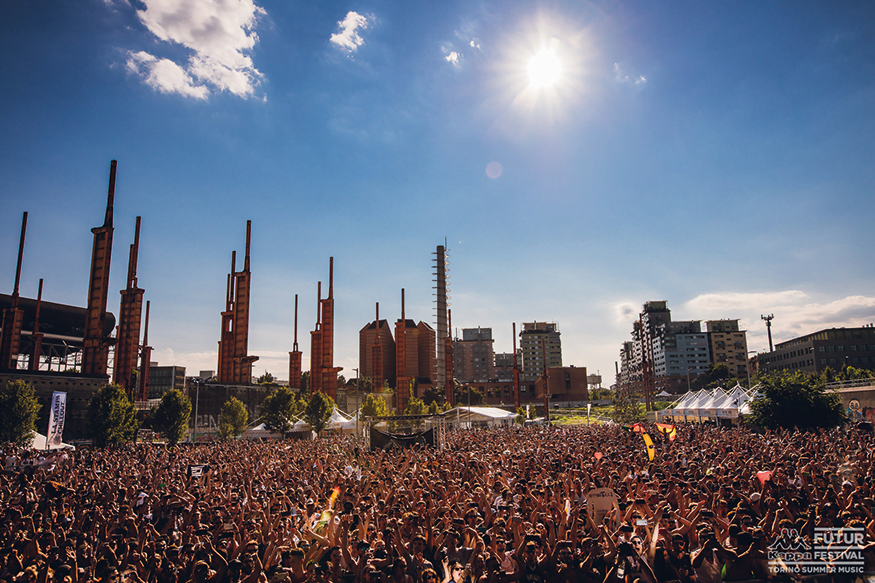
Swirling spotlights cut a path across thousands of techno fans, their hands raised as they pay homage to deejay Joseph Capriati. One inexplicably waves a meter-long inflatable banana in front of the massive stage, and almost all are still sweaty, even as the clock nears midnight. For nearly 12 solid hours, a hefty bassline has throbbed across the festival grounds, bullying its way towards the nearby residences.
But this year the chest-pounding pulse has met its match: the MONICA project. Or, at least, the first demonstration of what MONICA will be capable of.
About the MONICA project
- Three-year project co-funded by the European Commission
- Demonstrating how cities can use IoT technologies to manage sound and security at large, open-air cultural and sporting events
- 29 partners in nine countries
Like all city concert venues, the Kappa FuturFestival aims to create the right balance between an optimal outdoor concert sound and reduced noise in the surrounding environment. The MONICA project’s sound solution is designed to enable more accurate monitoring and control, both for a quality concert experience inside the venue and to limit sound propagation outside the venue.
“You need high sound pressure levels for an optimal concert sound, which is, of course, what the audience and the performers want. But you might have to turn down the volume because of sound level regulations. And even when you comply with those regulations, the neighbors might still complain. It’s tricky,” says Brüel & Kjær Research Engineer Karim Haddad, PhD, who is actively involved in the MONICA project.
With the help of staff from the city of Torino, Karim installed Brüel & Kjær’s specially designed sound level meters at the Kappa FuturFestival and actively monitored them throughout the event.
About the Kappa FuturFestival
- Electronic music festival held annually in Torino, Italy
- Four stages with concerts from noon to midnight
- Covers 450,000 m2 and hosts 47,000 attendees from around the world
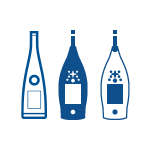 FROM SIMPLE TO ADVANCED
FROM SIMPLE TO ADVANCEDSOUND LEVEL METERS
Measuring sound levels
The sound level meters were used both within the concert area and outside the festival grounds. Each of the festival’s four stages had a sound level meter situated roughly 20 m in front of the stage. Five additional sound level meters were placed in the most exposed private residences outside the festival grounds to monitor the music’s impact on non-concertgoers nearby. “We measured the noise levels and the spectra at each of the locations,” explains Karim. “All the data was sent in real time to the cloud and used by technicians to make any necessary adjustments. If the level was above the acceptable guidelines for the city, then they reduced the level on the loudspeaker system inside the park area.”
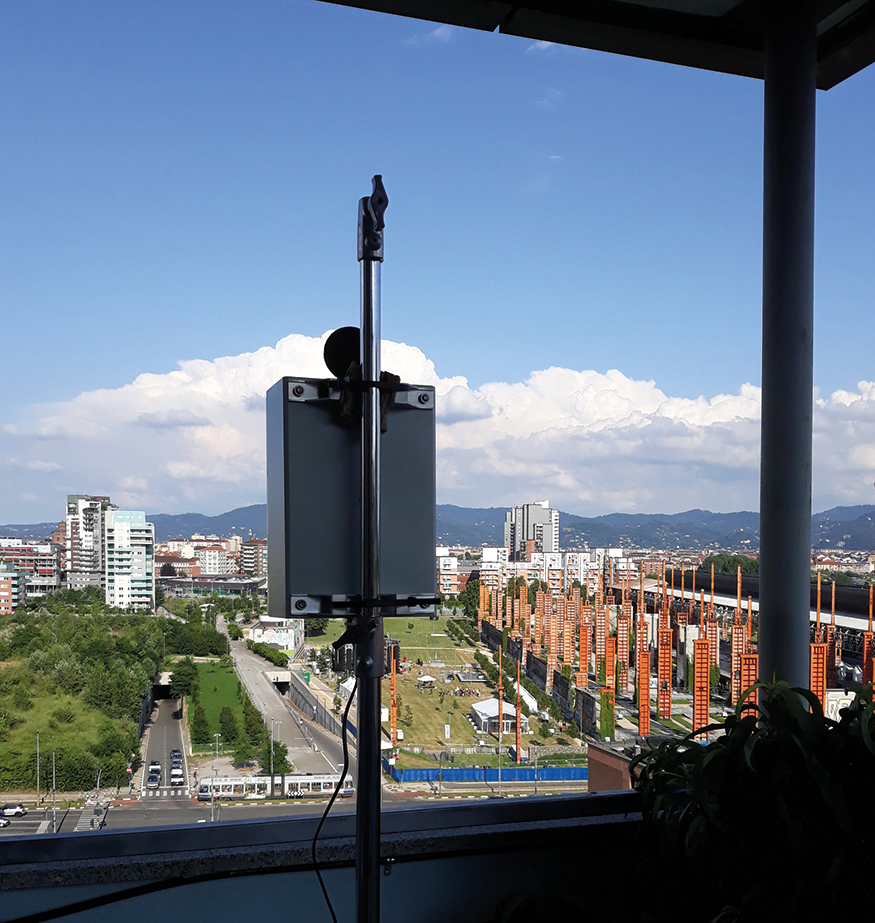
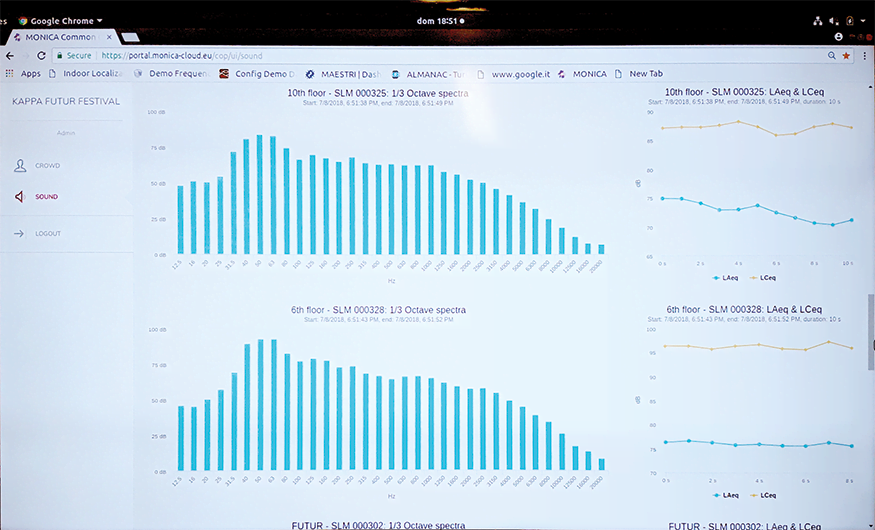
Sound field control system adapts as needed
The Technical University of Denmark (DTU), also a partner in the MONICA project, plays a key role in the sound solution. While Brüel & Kjær is responsible for detecting, measuring and analysing the sound data, the university’s task is to optimize and predict sound transmission.
In Torino, DTU set up 16 loudspeakers (subwoofers) behind the audience area at the “Futur” stage. The subwoofers are ideal for reproducing low-pitched audio frequencies. Five rows of 10 Brüel & Kjær microphones were placed approximately 50 to 150 m behind the subwoofers in the dark zone, which is an area where lower sound exposure from the stage is desired.
“The basic idea of the adaptive sound field control system (ASFCS) is using the secondary set of subwoofers to produce a sound field that is the same as the one produced by the original PA system subwoofers, but with opposite phase, and thus opposite sign. When adding the two, the result should be close to zero,” explains Jonas Brunskog, PhD, Associate Professor of Acoustic Technology in the DTU Department of Electrical Engineering.
“The microphones are used to measure transfer functions between all loudspeakers and microphones, before the concert. These are then used to find filter functions for each of the 16 added loudspeakers, found so that they minimize the sound pressure level in the dark zone where the microphones are located.”
”Background noise from traffic and the other festival stages made for problematic conditions, which affected both the quality of the measurements and the qualitative experience of the system,” Jonas says. However, the test was considered successful, since they achieved a reduction of about 6 dB at low frequencies.
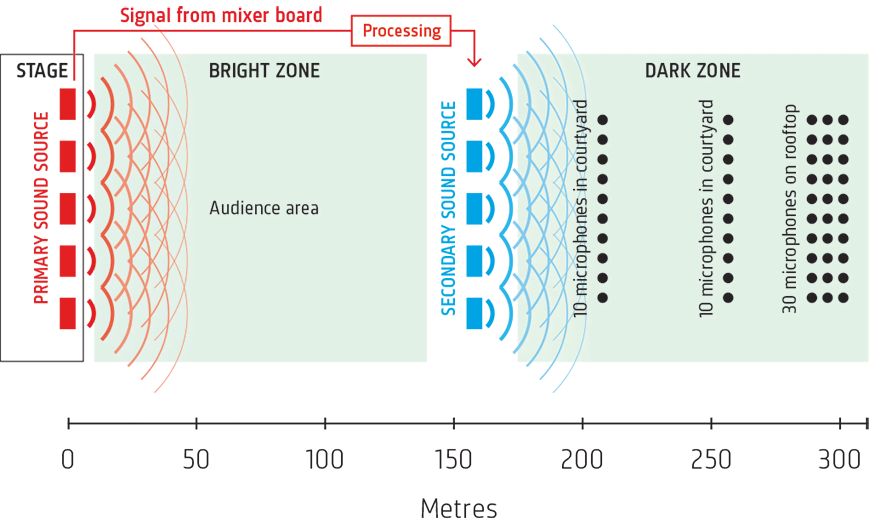
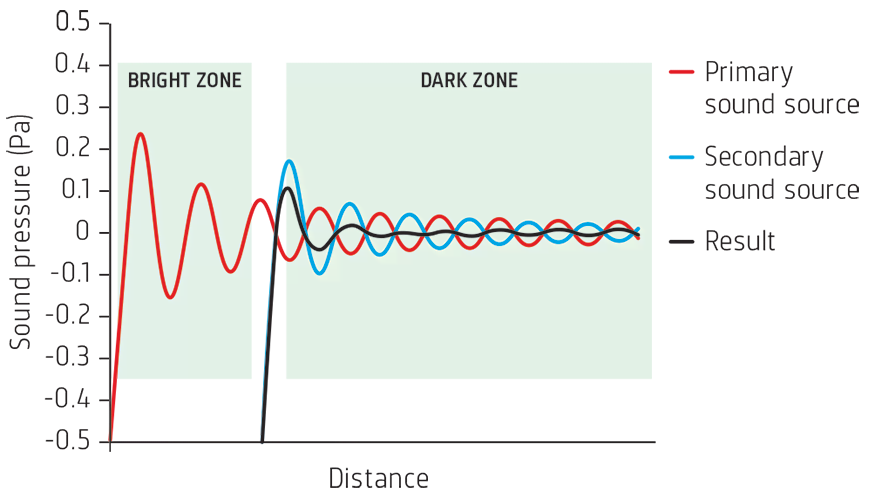
A successful start
The city of Torino, one of six pilot sites for the MONICA project, believes the demonstration of the sound system bodes well for its sister sites and, eventually, widespread use.
“The city of Torino deeply relies on continuous noise monitoring for the control of outdoor events, and the MONICA project successfully strengthened this approach. For this reason, we supported project demonstration at our best with local police, green areas staff and topographers,” says engineer Enrico Gallo, who works for the Municipality of Torino in its Environment, Green Areas and Civil Protection Division.In addition to collecting and using the measurements in real time, the city of Torino analysed all the sound data collected throughout the festival to determine how much each stage contributed to the overall sound levels at the locations measured. “The chance of having detailed, real-time data from each stage and at dwellings together with ASFCS really opens new opportunities for noise and annoyance reduction,” Enrico says.
Next up
Karim, from Brüel & Kjær, shares Enrico’s enthusiasm. “We got what we wanted! The results were what we expected, so now we can move on with our plan.
”For Brüel & Kjær, next steps include adding time data to the cloud, so that it’s possible to listen to the actual sounds recorded and to implement its algorithm for distinguishing concert noise from city noise and add it to the cloud. “We’re in the second year of the three-year project,” Karim explains.
“Next year we’ll have to demonstrate the system fully working at lots of different festivals.” In his opinion, the MONICA project’s dependency on the cloud is its biggest challenge. “We’re depending on the network, which can go down when there are so many people using it, and which can be vulnerable. It went well in Torino, but it depends on the local network. You have to be sure it’s reliable,” Karim cautions.
And having 29 different MONICA partners collaborating on different aspects of the same mammoth undertaking brings its own set of challenges.
“What’s interesting about a project like this is that you interact with people from different companies, universities and institutions who are not working in your field. You have to adapt your language, and they have to adapt their language, because of different expertise domains. And even working within Europe, you have different cultures. But if people have the good will, then it works well. And every partner on this project works seriously.”
Images: Copyright © Movement Entertainment
This is not the beginning of the story.
Click here to read about the MONICA project's concept and origin.
Related links:

Inscreva-se em nossa Newsletter e receba as últimas histórias do nosso mundo de ruído e vibração

